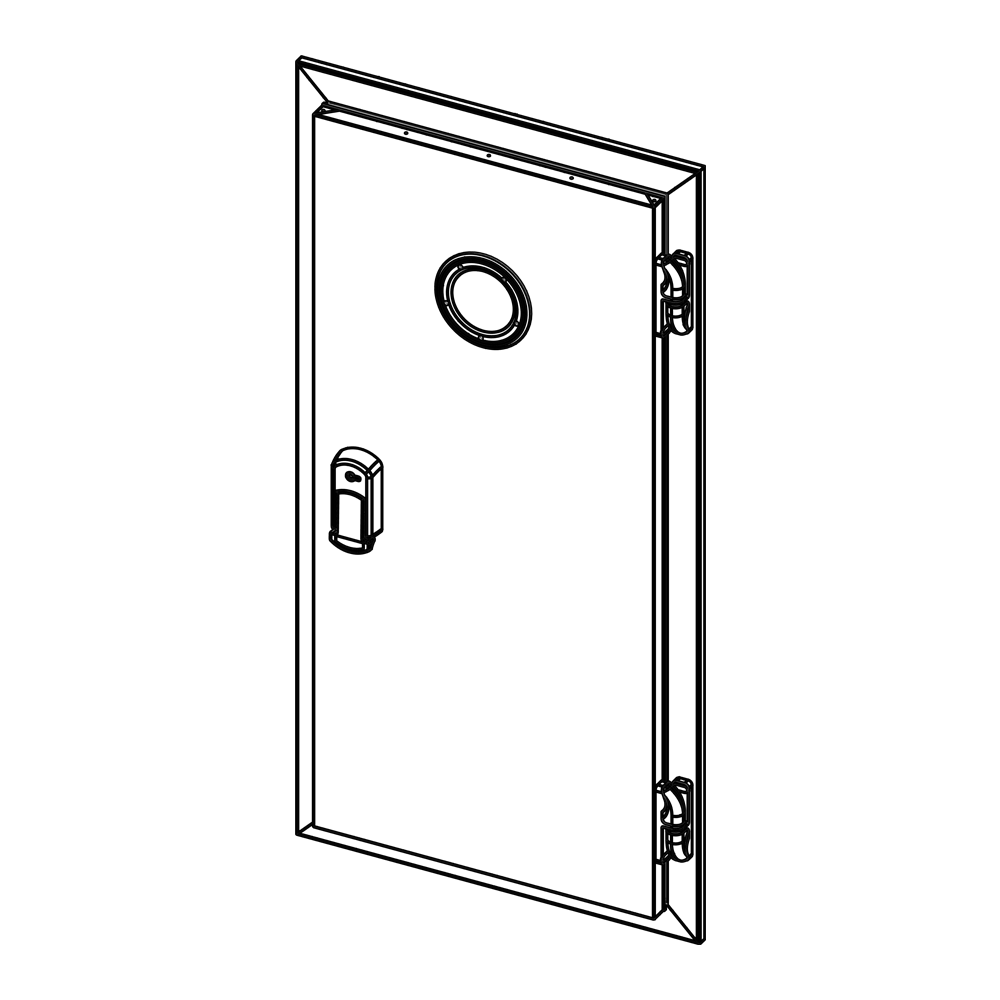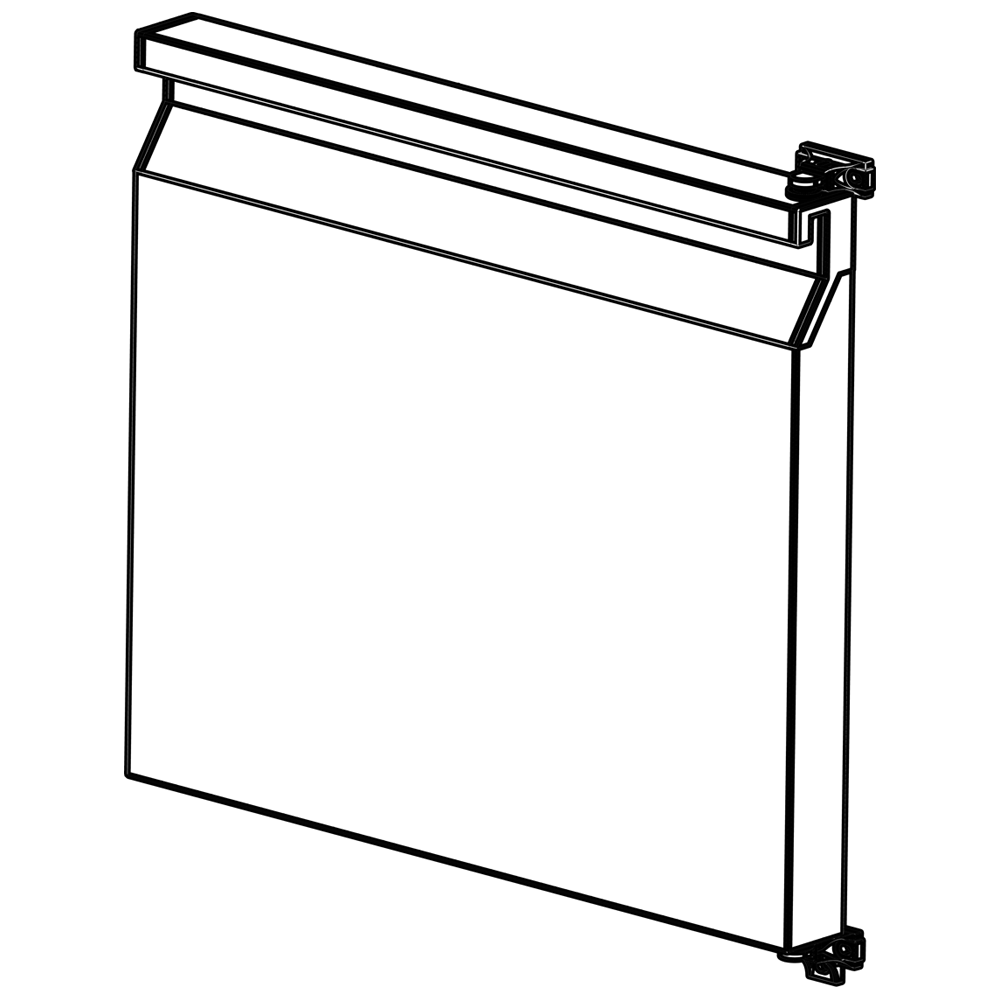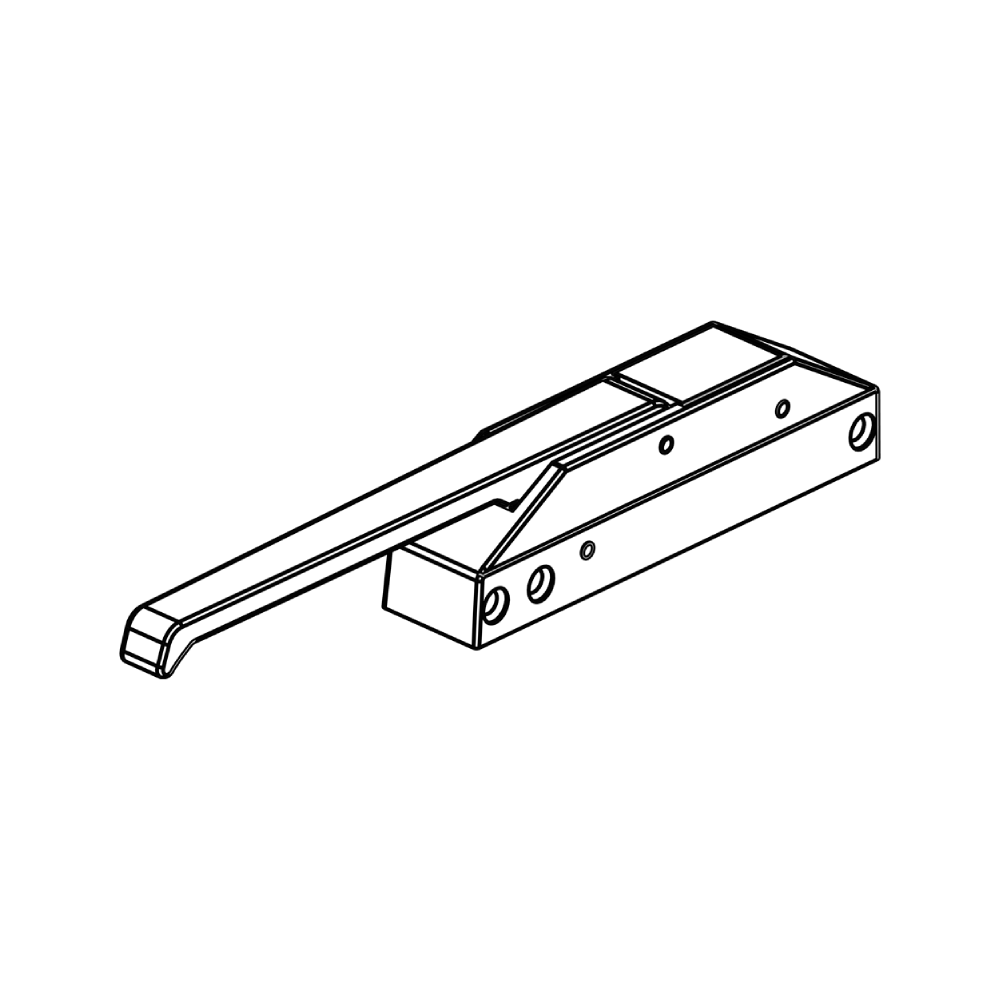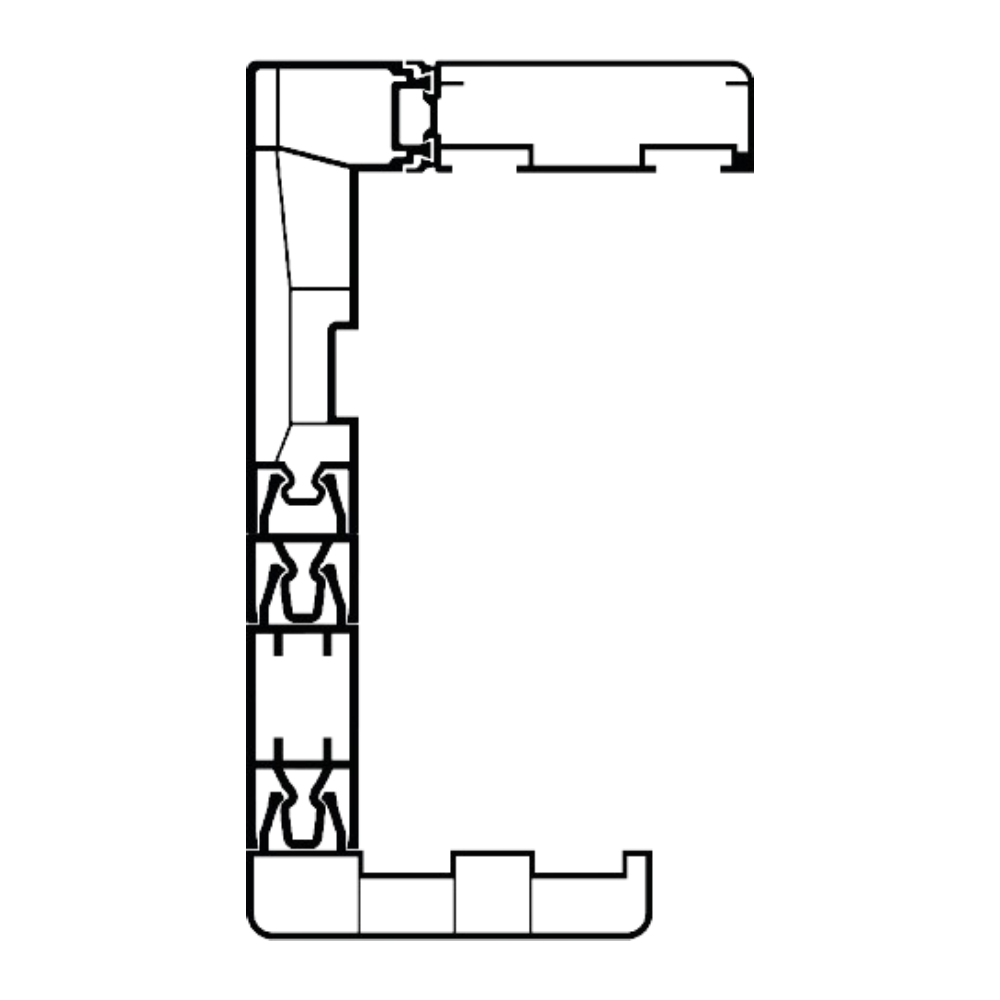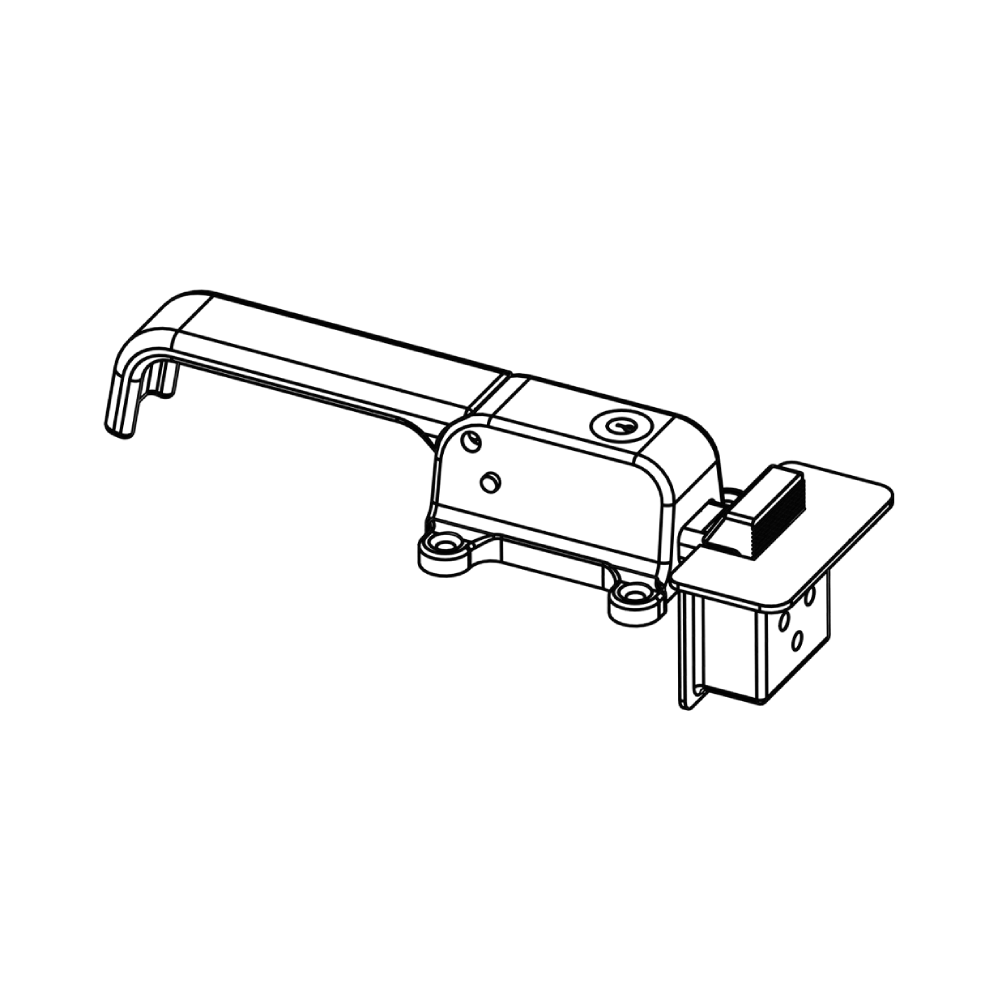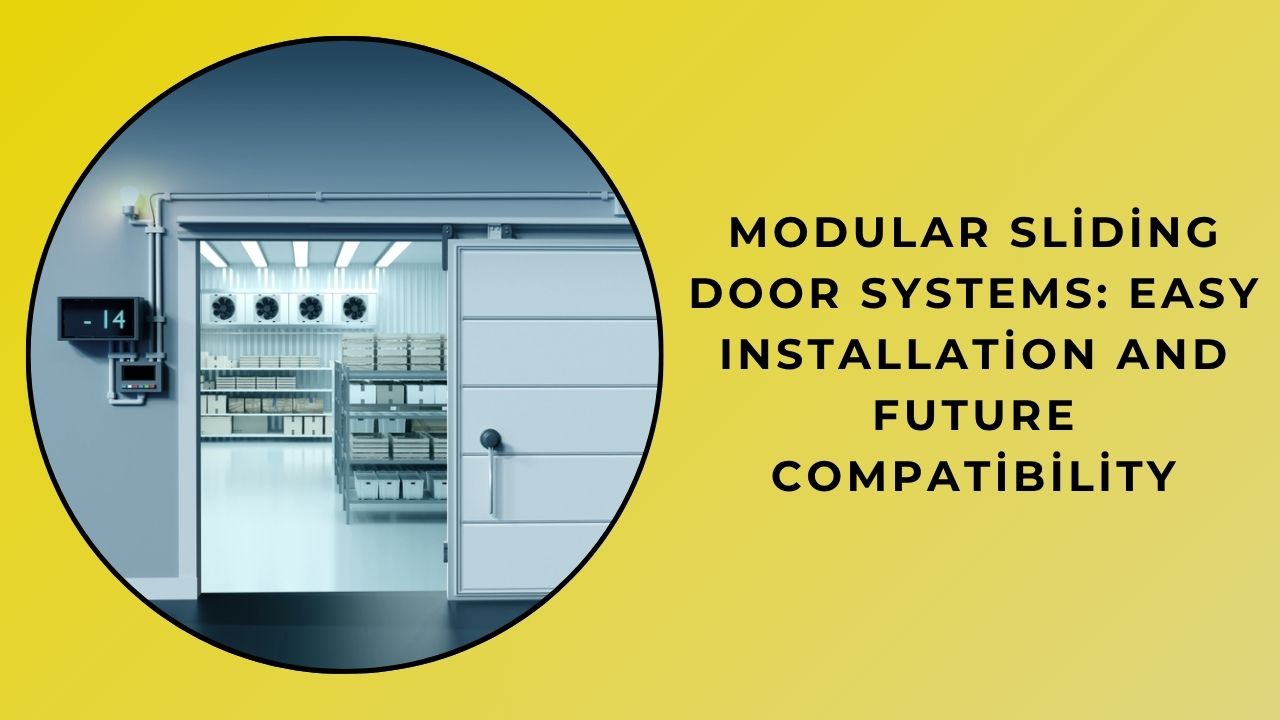Modular Sliding Door Systems: Easy Installation and Future Compatibility
Table of Contents
- The Ultimate Guide to Installing Modular Sliding Door Systems
- Are Modular Sliding Doors the Future-Proof Choice for Industrial Spaces?
- Key Factors for Ensuring Future Compatibility in Your Sliding Door System
- Modular vs. Traditional Sliding Doors: A Technical Comparison of Installation and Longevity
- How to Plan a Modular Door Installation for Easy Upgrades and Expansion
- What Makes a Sliding Door System Truly Modular? A Look at Components and Standards
The Ultimate Guide to Installing Modular Sliding Door Systems
The installation of large-scale door systems in industrial facilities represents a critical junction between architectural design, structural engineering, and operational workflow. A meticulously planned installation methodology is paramount for ensuring long-term performance and safety. The modular nature of advanced systems from İmamoglu allows for a systematic approach, where pre-engineered components are assembled on-site with precision. This process begins with a thorough assessment of the structural integrity of the host building, specifically the header and track support system, which must be capable of handling dynamic and static loads.
Proper load calculation is the foundation of a reliable installation, directly influencing the selection of the track, hangers, and door leaf materials. Engineers must account for the door's weight, wind loads in large openings, and frequent cycling demands. İmamoglu systems are designed with a focus on sealing performance, a critical feature for environmental control in facilities requiring climate segregation or contamination containment. Achieving an effective seal depends on precise alignment during the track alignment phase, ensuring the door travels smoothly without binding or leaving gaps.
The integration of automation and safety systems is a key consideration for modern industrial applications. This involves the strategic placement of photoelectric sensors and edge-sensitive safety devices to prevent accidents and ensure compliance with international machinery directives. The operational efficiency gains from a correctly installed automated door are substantial, reducing energy loss and improving traffic flow in high-volume areas like loading docks and warehouse access points. A rigorous commissioning checklist is essential, verifying every function from manual override capabilities to the integration with facility management systems.
Beyond initial setup, the design facilitates long-term maintenance accessibility. Modular components from İmamoglu allow for the replacement of individual parts like rollers or seals without dismantling the entire system, minimizing downtime. This design philosophy underscores the commercial value of the installation guide, translating technical precision into tangible return on investment through enhanced durability and reduced lifecycle costs. The guide serves as a vital resource for ensuring that the installed system meets its designed performance specifications consistently.
Are Modular Sliding Doors the Future-Proof Choice for Industrial Spaces?
The selection of door systems for industrial facilities is a critical decision impacting long-term operational efficiency and cost management. In this context, modular sliding doors represent a significant evolution from traditional sectional or roller shutter options, offering a compelling case for future-proofing industrial spaces. Their design philosophy centers on adaptability and resilience, addressing core challenges in modern industrial logistics and workflow optimization.
A primary technical advantage lies in the modular construction itself. Unlike monolithic door panels, these systems are composed of individual, interchangeable leaves. This design fundamentally simplifies maintenance and repair; a damaged panel can be replaced without taking the entire door system offline, a crucial feature for minimizing downtime in high-throughput environments like distribution centers and manufacturing plants. The ability to service specific components enhances the system's overall durability and extends its service life significantly.
Operational efficiency is further amplified by superior thermal insulation properties. The interlocking panels create a tight seal when closed, effectively minimizing air infiltration between temperature-controlled zones. This thermal integrity directly translates into reduced energy consumption for heating and cooling systems, yielding substantial cost savings and supporting sustainability goals. For facilities requiring strict climate control, such as food storage or pharmaceutical warehouses, this airtight seal is a non-negotiable performance criterion.
The robust engineering of systems like those from İmamoglu ensures reliable performance under demanding conditions. High-quality galvanized steel components and advanced track systems provide exceptional resistance to corrosion, heavy impact, and constant use. This structural integrity guarantees a high cycle rating, meaning the door can endure thousands of open-close cycles annually with minimal wear, a vital metric for automated loading bays.
From a commercial perspective, the initial investment in a modular sliding door system is justified by its long-term total cost of ownership. The combination of energy efficiency, minimal maintenance requirements, and extended operational life results in a lower lifetime expense compared to conventional doors. This makes it a strategically sound investment for commercial decision-makers focused on operational excellence and asset longevity.
Key Factors for Ensuring Future Compatibility in Your Sliding Door System
In the design and specification of industrial sliding door systems, achieving immediate operational performance is only half the battle; true long-term value is secured through a deliberate strategy for future compatibility. This approach ensures that a door installation remains a viable asset for decades, adapting to evolving operational demands, technological advancements, and stringent safety regulations without necessitating a complete and costly system replacement.
The foundation of this adaptability lies in a modular system architecture. By designing door systems with standardized, interchangeable components, engineers create a platform for seamless upgrades. This principle allows for the straightforward integration of new safety sensors, more powerful drive units, or advanced control interfaces as they become available. A robust system architecture decouples the longevity of the core mechanical structure from the inevitable obsolescence of electronic subsystems.
Central to this concept is the implementation of open or well-documented communication protocols. Proprietary or closed protocols create vendor lock-in, severely limiting future options. In contrast, systems built on established standards like BACnet, Modbus, or CANopen facilitate straightforward integration with Building Management Systems (BMS) and other industrial IoT platforms. This interoperability is a critical performance metric for modern facilities, enabling centralized monitoring, predictive maintenance, and data-driven optimization of traffic flow and energy consumption.
Material selection and mechanical design are equally vital for long-term durability and compatibility. Components such as tracks, rollers, and bearings must be engineered to withstand not only current usage patterns but also anticipated future increases in cycle frequency or environmental stress. The use of high-grade aluminum alloys, stainless steel hardware, and advanced composite materials ensures structural integrity and corrosion resistance, which are essential for maintaining precise operational tolerances over the system's entire lifecycle.
Forward-thinking manufacturers like İmamoglu embed this philosophy into their product development, viewing each door not as a standalone product but as a core element of a building's long-term operational integrity. This commitment to future-proofing provides commercial decision-makers with a compelling Total Cost of Ownership (TCO) argument, transforming a capital expenditure into a strategic investment that protects against premature obsolescence and ensures continuous, reliable performance in dynamic industrial environments.
Modular vs. Traditional Sliding Doors: A Technical Comparison of Installation and Longevity
The fundamental distinction between modular and traditional sliding door systems lies in their core assembly methodology. Traditional systems are fabricated as large, single-unit panels, requiring significant on-site labor for fitting and installation. In contrast, modular doors, such as those engineered by İmamoglu, are comprised of pre-manufactured, interconnected sections that are assembled directly at the opening, dramatically altering the project timeline and labor equation.
This segmented design directly impacts the structural integrity and long-term performance. The modular approach allows for controlled manufacturing tolerances in a factory setting, ensuring each component meets precise specifications. This results in a more consistent and reliable final product compared to a traditional door, which can be susceptible to warping or misalignment due to on-site environmental conditions during its lengthy assembly process.
From a commercial and project management perspective, the total cost of ownership is a critical metric where modular systems demonstrate clear advantages. While the initial unit cost may be comparable, the significant reduction in installation time and specialized labor leads to lower overall project costs. Furthermore, the simplified maintenance protocols for modular doors are a key benefit; individual damaged sections can be replaced without dismantling the entire system, minimizing operational downtime in high-traffic industrial settings.
The inherent durability of a door system is tested by daily operational stresses. Modular doors, with their interlocking panel design, often distribute mechanical stress more effectively across the entire structure. This enhanced load distribution reduces wear on tracking and hardware, directly contributing to superior longevity and reducing the frequency of repairs. The predictable performance of a pre-engineered modular unit provides a more reliable operational lifespan.
For facilities requiring specific performance characteristics, such as thermal insulation or acoustic damping, the modular construction offers superior performance metrics. The precision engineering of each seal and panel interface in a factory environment ensures consistent environmental separation, which is difficult to achieve with a field-assembled traditional door. This makes modular solutions ideal for climate-controlled warehouses or noise-sensitive environments.
Ultimately, the choice between modular and traditional systems is a strategic decision weighing initial installation against long-term value. The technical superiority of modular doors in terms of installation efficiency, predictable structural integrity, and simplified maintenance presents a compelling case for modern industrial applications where reliability and operational continuity are paramount.
How to Plan a Modular Door Installation for Easy Upgrades and Expansion
The strategic implementation of a modular door system begins with a comprehensive lifecycle analysis that evaluates long-term operational requirements beyond the initial installation. This forward-thinking approach is critical for industrial facilities where future expansion or process changes are anticipated. The core principle involves designing a standardized structural framework that serves as a permanent host for interchangeable door leaves and components.
Central to this planning phase is the specification of a unified interface standard for all door modules, ensuring mechanical and electrical compatibility across different product lines and future upgrades. This standardization decouples the door leaf technology from the supporting infrastructure, allowing for seamless component interoperability. A facility can initially install basic doors and later upgrade to advanced models with integrated safety systems or enhanced insulation without replacing the entire assembly.
For product managers, this modularity translates into significant cost control and future-proofing of capital investments. The initial investment in a robust framework mitigates the need for costly structural modifications down the line. Upgrades become a matter of swapping modules, drastically reducing downtime and labor expenses. This approach aligns perfectly with just-in-time manufacturing philosophies and agile facility management.
In demanding environments, such as cold storage or cleanrooms, the sealing integrity of the door system is paramount. A well-planned modular installation ensures that the primary seal is integrated into the frame, guaranteeing consistent performance regardless of the specific door leaf installed. This is a critical performance characteristic for maintaining environmental controls and energy efficiency.
The commercial benefits are further realized through simplified maintenance and inventory management. Technicians require training on a single framework system, and spare parts inventory can be rationalized around common components. A manufacturer like İmamoglu exemplifies this philosophy by engineering systems where the technical specifications for mounting points and power connections are consistent across their entire range, from high-speed doors to heavy-duty industrial models.
Ultimately, a meticulously planned modular door installation is not merely a procurement decision but a strategic infrastructure investment. It provides the operational flexibility to adapt to changing production needs, integrate new technologies, and expand facility footprints with minimal disruption, ensuring the door system evolves in lockstep with the business itself.
What Makes a Sliding Door System Truly Modular? A Look at Components and Standards
The defining characteristic of a truly modular sliding door system is its foundation upon standardized, interchangeable components. This design philosophy transcends mere product variation, establishing a scalable and highly adaptable architectural solution. At its core, a genuine modular system relies on a rigid aluminum profile framework, engineered with precise tolerances to serve as the primary structural element.
The integrity of the entire assembly depends on the precision of these extruded aluminum profiles and the accompanying hardware components. Carriers, tracks, and rollers must conform to exacting technical specifications to ensure smooth operation, long-term reliability, and load-bearing capacity. This component-level standardization is critical for achieving a seamless system integration regardless of project scale.
True modularity is demonstrated through effortless configurability. Panels of varying dimensions, materials, and finishes can be fitted into the same profile system without custom fabrication. This allows for the creation of complex partitions, room dividers, or large-scale facades using a unified component library. The commercial benefit is a significant reduction in design time, procurement complexity, and total cost of ownership.
For industrial applications, this adaptability is paramount. A system like those from İmamoglu can be specified for environments ranging from cleanrooms requiring strict hygiene to heavy-duty warehouses demanding impact resistance. The modular approach facilitates future modifications, such as reconfiguring floor plans or replacing individual panels, with minimal disruption and waste.
Ultimately, a sliding door system's modularity is validated by its adherence to a comprehensive design framework. This framework encompasses everything from the mechanical connection details to the compatibility of gaskets and glazing methods. It is this rigorous, systematic engineering that transforms a collection of parts into a dependable, future-proof solution for dynamic commercial and industrial spaces.


